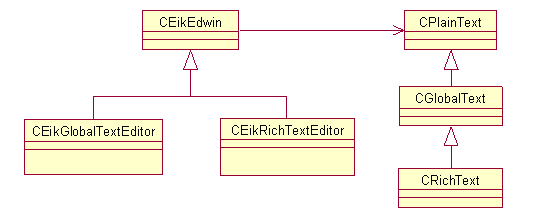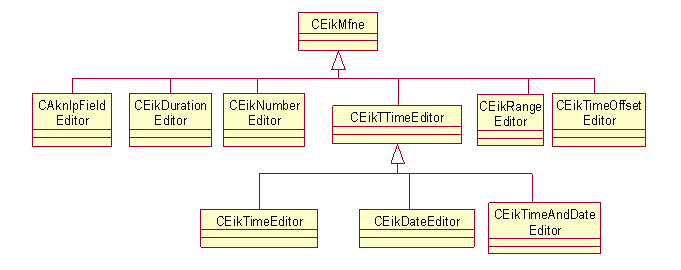
Figure 7: Relevant constituents of Text Editors
The API exposes the functionality through which user can create, configure and manipulate editors. The API description will be covered through the main use cases of various editor types.
CEikEdwin based
editors
CEikEdwin based
editors
CEikEdwin based editors
CEikEdwin based editors
CEikEdwin based editors
All S60 editors are either derived from CEikEdwin or CEikMfne.
Text editors, numeric editors belong to the firs category and multi-field
numeric editors belong to the latter.
CEikEdwin is the generic Symbian OS editor for text. It
supports scrollable windows, embedded objects, FEP interactions, clipboard
operations. CEikEdwin can handle plain text, global text
and rich text. They are represented by CPlainText, CGobalText and CRichText classes
respectively. They form a derivation chain in this order. CPlainText is
used for storing unformatted text. CGlobalText facilitates
the use of one global format that is valid throughout the full length of the
text whereas with CRichText user can add format modifiers
at any position of the text flow. Rich text also supports object embedding.
Embedded objects are represented in rich text by CPicture-derived
objects.
Note that CEikEdwin itself is capable of handling global
text or rich text however it is advised that developers use derived CEikGlobalTextEditor and CEikRichTextEditor classes
respectively when dealing with such contents. When discussing the Plain Text
Editor we actually mean discussing all functionality of CEikEdwin that
is relevant for creating and manipulating plain text. CEikEdwin’s
capabilities go much beyond that those will be covered when discussing its
two subclasses CEikGlobalTextEditor and CEikRichTextEditor.

Figure 7: Relevant constituents of Text Editors

Figure 8: Relevant constituents of Numeric Editors

Figure 9: Relevant constituents of MFNE Editors